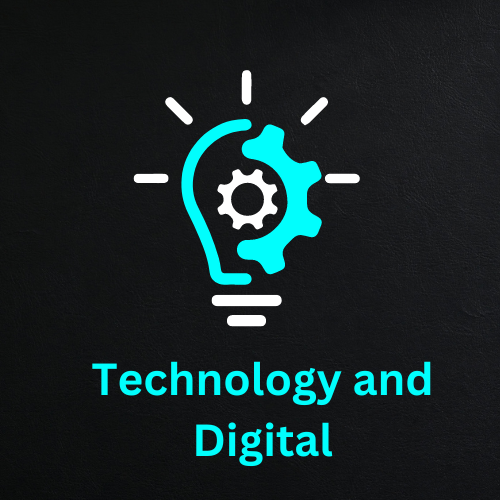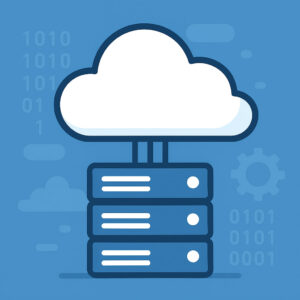Edge AI: Bringing Intelligence to the Network Edge

Increasing data volumes, demands for real-time responsiveness, and privacy concerns are pushing intelligence closer to where data is generated. Edge AI is the convergence of artificial intelligence and edge computing—where AI models run directly on devices or local nodes rather than in distant cloud servers. This shift changes how systems are designed, deployed, and maintained.
This article explains how Edge AI works today, where it makes the biggest difference, the challenges to tackle, and practical tips for those starting with Edge AI in IT environments. The tone is friendly, grounded, and full of insights drawn from real-looking scenarios.
How Edge AI Works: Core Concepts
Edge AI brings inference (and sometimes training) out of centralized servers and into devices or local gateways. That means models process data locally—on sensors, cameras, industrial controllers, or edge servers—without first sending data upstream. This approach has several technical components and architectural patterns.
Model Placement and Inference Modes
- On-device inference: AI models deployed on embedded chips, microcontrollers, or mobile hardware for instant processing.
- Edge server inference: Local servers near the data source host heavier models and aggregate inputs from multiple devices.
- Hybrid inference: A lightweight model runs locally for instant responses, while a more powerful model in the cloud refines or retrains periodically.
For example, a security camera may run a small object detection model locally to detect motion and flag suspicious activity, while sending low-frequency aggregated data to a cloud model for deeper analytics.
Data Pipeline & Preprocessing
Raw sensor data often needs cleaning, normalization, feature extraction, and filtering before inference. At the edge, preprocessing reduces noise and data volume, making inference faster and more efficient. Techniques like quantization, pruning, and model compression are essential to fit AI models into limited resources.
Model Update & Synchronization
Edge AI systems often require periodic updates or retraining. Models might be updated from the cloud, or local devices might collect data and push back to central systems. Mechanisms must exist for version control, rollback, safe updates, and consistency across distributed nodes.
Practical Tip:
Start with lightweight, well-understood models (e.g., image classification or anomaly detection) and deploy them on one or two devices. Monitor performance, latency, memory usage, and power draw. Use that as a benchmark before scaling to more devices.
Where Edge AI Delivers Value
Edge AI excels when latency, privacy, connectivity, or data volume make cloud-only architectures impractical. In 2025, several domains showcase its advantages.
Industrial & Manufacturing Automation
On factory floors, edge AI monitors machinery, predicts failures, and adjusts parameters in real time. If a motor begins to vibrate abnormally, the edge node can trigger a shutdown or maintenance alert before damage escalates. Machine uptime increases and costly breakdowns are prevented.
Smart Cities & Public Infrastructure
Traffic cameras, environmental sensors, and public safety systems benefit when intelligence is local. For instance, a traffic sensor detects congestion and signals lights adapt instantly. In air-quality monitoring, alerts can issue locally without waiting for cloud processing.
Healthcare & Wearables
Medical devices and wearables running AI locally can monitor vital signs continuously and alert anomalies without sending sensitive data externally. Implants or remote monitoring tools can run decision logic on-device to conserve battery and minimize latency.
Retail & Customer Experience
Retail stores can use edge AI in kiosks or cashier cameras for queue prediction, customer sentiment analysis, or inventory monitoring. Because models run on site, customer interactions remain fast and privacy-sensitive data need not leave premises.
Practical Tip:
Select use cases where the cost of delay or data transfer is meaningful: latency under 100 ms, sensitive data, or bandwidth limits. These scenarios are where Edge AI truly shines over cloud-based AI.
Benefits & Challenges of Edge AI
Major Benefits
- Low Latency: Decisions happen locally, eliminating round-trip delays to cloud servers.
- Reduced Bandwidth Use: Only essential data is sent upstream; extraneous raw data stays local.
- Privacy & Compliance: Sensitive data can be processed locally, reducing exposure and helping compliance with data laws.
- Reliability in Disconnected Environments: Edge nodes continue working even when cloud connectivity is intermittent.
- Scalability: Adding more devices doesn’t always increase cloud load if much processing is local.
Key Challenges & Trade‑offs
- Resource Constraints: Memory, compute, and power are limited on many edge devices.
- Model Drift & Updates: Keeping models accurate as environments change demands a robust update strategy.
- Security Risks: Edge nodes may be physically accessible, increasing attack surface.
- Consistency & Synchronization: Ensuring all nodes use the correct model version and data alignment.
- Debugging & Monitoring: Observability across distributed nodes is complex and costly.
Practical Tip:
Include secure boot, encryption, and tamper detection in device design from the start. Automate model validation and rollback to avoid propagation of flawed models across the network.
How to Build an Edge AI Strategy in IT Environments
Step 1: Identify High‑Value Use Cases
List potential applications (predictive maintenance, vision analysis, anomaly detection). Score by latency sensitivity, data sensitivity, connectivity constraints, and ROI. Prioritize two or three to pilot first.
Step 2: Assess Edge Infrastructure & Hardware
Audit existing devices and gateways. Determine which have enough compute (e.g. AI accelerators, NPUs) or whether new hardware is needed. Verify network reliability, power, and cooling constraints.
Step 3: Select the Right AI Model & Frameworks
Use frameworks suited for edge deployment (e.g., TensorFlow Lite, ONNX Runtime, PyTorch Mobile). Compress and optimize models (quantization, pruning) to fit hardware constraints.
Step 4: Build Edge-to-Cloud Pipeline
Design data flows for local processing, aggregation, and selective cloud upload. Use edge gateways to buffer or batch transmissions. Incorporate mechanisms for model updates, versioning, and rollback.
Step 5: Deploy Pilot & Monitor Behavior
Run the initial deployment in shadow mode, where edge decisions are logged but not acted automatically. Validate outputs, latency, accuracy, and network performance. Then move to active mode.
Step 6: Scale Gradually & Manage Complexity
Add more devices, refine orchestration, enforce governance, and implement centralized dashboards. Define policies for device health, update schedules, and fallback behavior if nodes fail.
Practical Tip:
Use device management platforms that support over-the-air updates, remote diagnostics, and rollback capability. Monitoring agent health and model performance centrally helps detect drift or failures early.
Hypothetical Scenario: Smart Factory Deployment
A manufacturing company operates a factory with robotic arms, conveyor belts, and quality cameras. A pilot is launched: cameras inspect parts locally using edge AI models, flagging defects in under 20 ms. Even in network outages, inspection continues. Periodically, images and model logs sync to the cloud to retrain models with more data. After three months, defect rates drop by 35%, and unreachable network zones no longer delay detection. The pilot expands to other lines, creating a mesh of edge AI nodes across the facility.
Emerging Trends in Edge AI for 2025
Federated & Collaborative Learning
Instead of sending data to the cloud, devices share model updates (gradients) in a privacy-preserving way. This enables model improvements without exposing raw data.
TinyML & Ultra‑Low Power AI
Models fit into microcontrollers (with just kilobytes of RAM) to support sensor-level intelligence in battery-powered or constrained environments.
Hardware Innovation: NPUs & AI Accelerators
More chips are shipping with built-in Neural Processing Units (NPUs) or tensor cores. These accelerators make inference efficient and lower power compared to general-purpose CPUs.
<h3>Edge AI + 5G / 6G Connectivity</h3>
High-speed, low-latency links enable edge clusters to cooperate and offload to nearby fog layers. Multi-access edge computing (MEC) services allow edge nodes to use network‑provided resources closer than the cloud.
Autonomous Edge Agents
Edge AI systems may evolve agents that decide when to act locally, when to sync, or when to escalate to cloud or human oversight. This adds autonomy to distributed intelligence.
<h3>Practical Tip:
Monitor hardware trends and plan for modular upgrades. If a new NPU-compatible board appears, build modularity so that nodes can replace compute modules without full redesign.
<h2>Conclusion & Invitation to Try</h2>
Edge AI is reshaping computing architectures, bringing intelligence closer to where data is produced. With benefits like reduced latency, privacy preservation, and resilience to connectivity issues, it presents a powerful direction for future systems. Challenges remain—resource constraints, security, model drift—but careful design, pilot programs, and robust pipelines help manage those risks.
Which scenario in your environment seems ripe for an edge AI pilot? Pick one (e.g. camera, sensor array, local gateway), prototype, measure results, and iterate. Share your experiments, surprises, or questions in the comments below—learning from real experience makes this journey richer for everyone.




